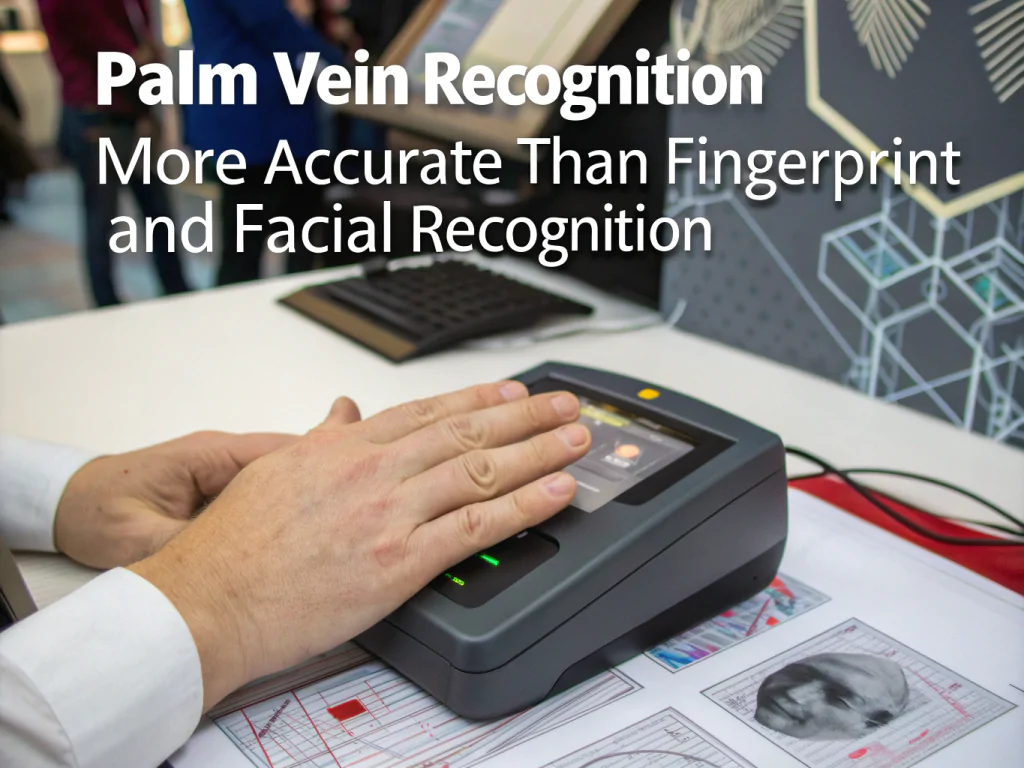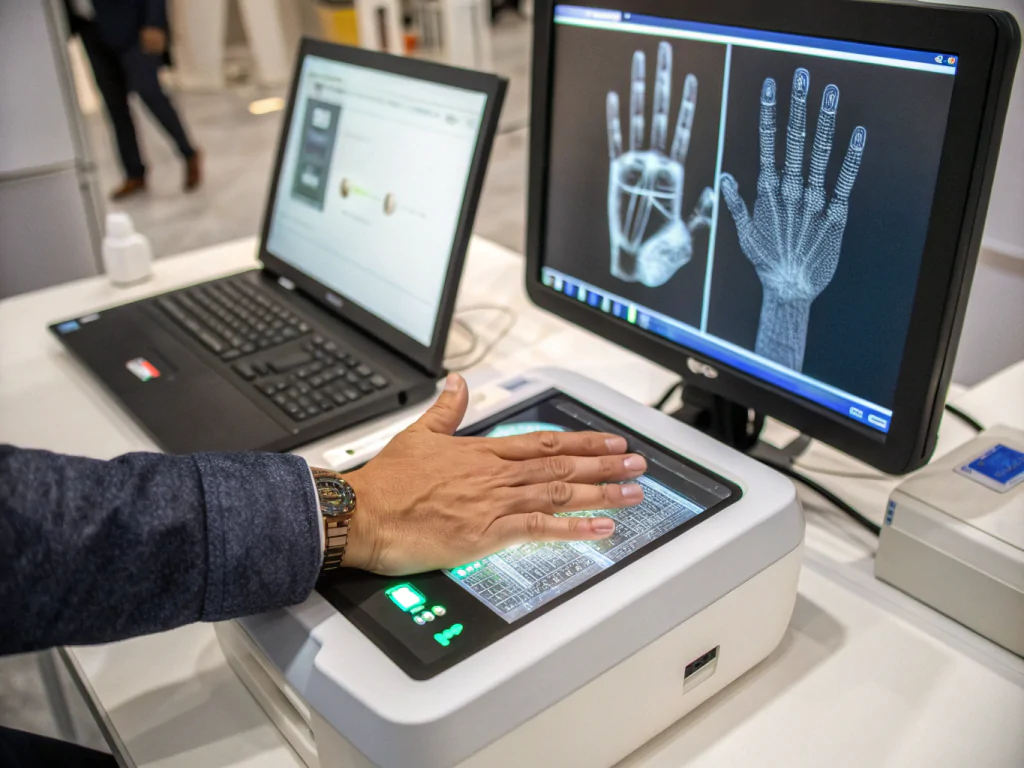
I’ve always been fascinated by how biometrics are revolutionizing the way we verify identities. And when it comes to accuracy, palm vein recognition stands out. Why? Because it uses patterns inside the palm that are much harder to forge. This makes it the most reliable method compared to older systems like fingerprints or facial recognition.
Palm vein recognition is more accurate than fingerprint and facial recognition because it scans the internal vein patterns, which are unique to each individual and nearly impossible to replicate. The palm has a larger surface area, allowing for more data points to be captured, which results in lower false acceptance and rejection rates.
I remember the first time I saw palm vein recognition in action. It was in a high-security building, where only a handful of people had access. The system quickly and accurately identified each person, without any hassle. This level of accuracy made me wonder why more systems weren’t using this technology. Let’s take a closer look.
Table of contents
- How Accurate Is Palm Vein Recognition?
- Are Palm Prints as Good as Fingerprints?
- What Are the Disadvantages of Palm Vein Scanning?
- What Is the Difference Between Palm Vein and Fingerprint Recognition?
- Is Palm Vein Technology the Best Biometric Solution?
How Accurate Is Palm Vein Recognition?
When I first heard about palm vein recognition, I wondered how it could be so much more accurate than fingerprint recognition. After all, fingerprints have been the standard for years. But palm vein recognition stands out for a few reasons.
Palm vein recognition is more accurate than fingerprint recognition because it relies on unique, internal vein patterns that are much harder to replicate. It also captures more data points due to the palm’s larger surface area, leading to fewer errors.
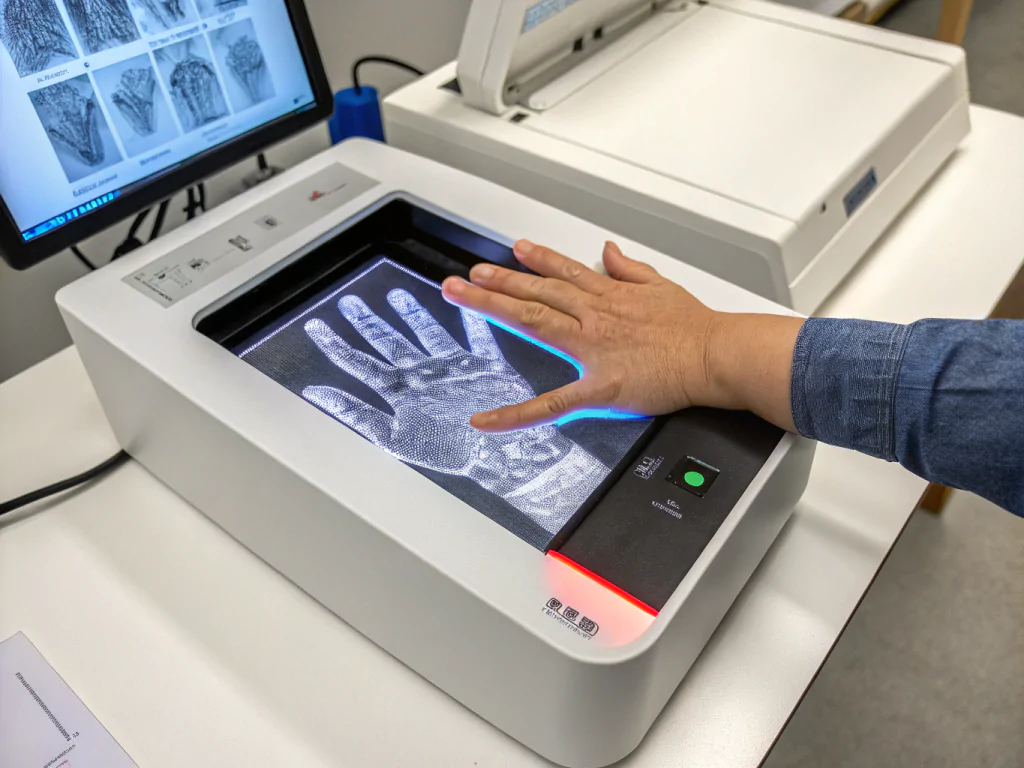
| Feature | Palm Vein Recognition | Fingerprint Recognition |
|---|---|---|
| Accuracy | Very High | High |
| Data Points Captured | Large Surface Area | Small Surface Area |
| Vulnerability | Low | Moderate |
| Ease of Use | Easy | Easy |
The bigger surface area of the palm allows more data to be captured, making it a lot harder for anyone to fake their identity. This gives palm vein recognition the edge when compared to fingerprint scanners.
Are Palm Prints as Good as Fingerprints?
I often get asked if palm prints are better than fingerprints. To answer simply, yes. Palm prints provide more data and can be more reliable, especially when you’re dealing with high-stakes security situations.
Palm prints are better than fingerprints because they have more identifiable characteristics. While fingerprints have about 150 points, palm prints can have up to 1,500, making them more detailed and reliable.
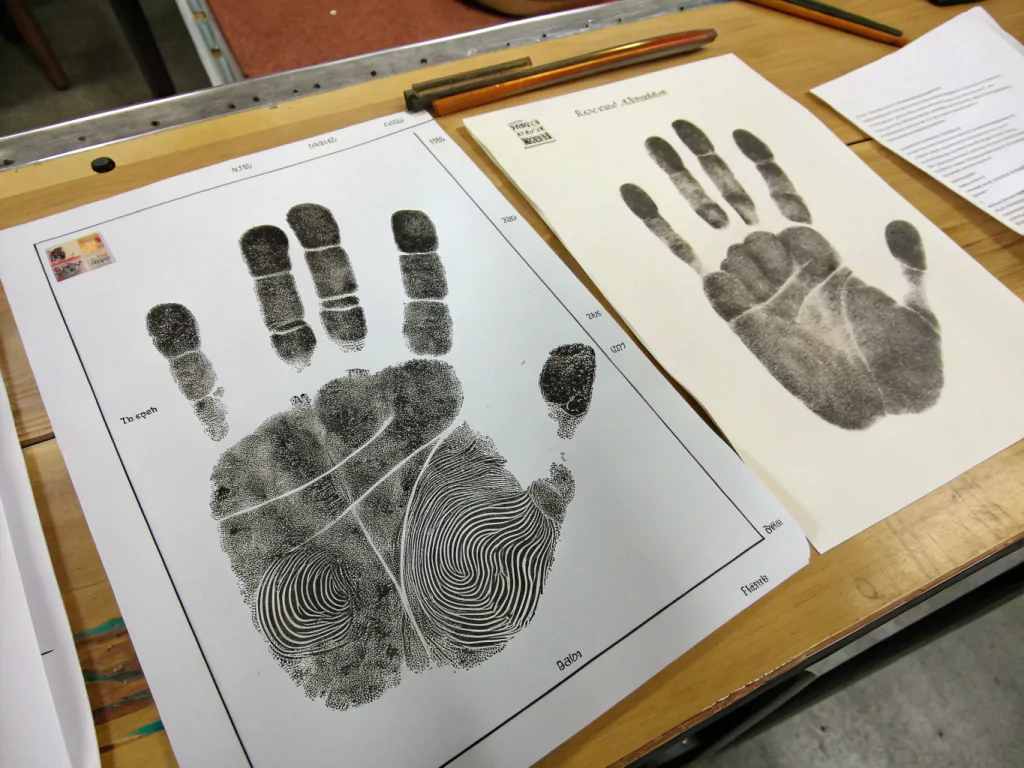
When I learned about palm prints, I realized how much more reliable they could be. Here’s why:
- More Data: Palm prints cover a larger area of the hand, allowing scanners to capture more unique features than fingerprint scanners, which are limited to the fingertip.
- Better for Matching: This increased number of data points makes palm prints better for matching and identification. It reduces the chance of false positives or errors.
With palm prints, I’ve seen systems handle cases where fingerprint scanners failed to accurately match identities, simply because they didn’t have enough data points to work with.
What Are the Disadvantages of Palm Vein Scanning?
Although palm vein scanning is incredibly accurate, it’s not perfect. There are a few drawbacks that come with it, especially when compared to fingerprint or facial recognition systems.
Palm vein scanning can be more expensive to implement and requires additional security measures like data encryption. Health conditions can also affect scan quality, and the systems are still not as widely used as fingerprinting.
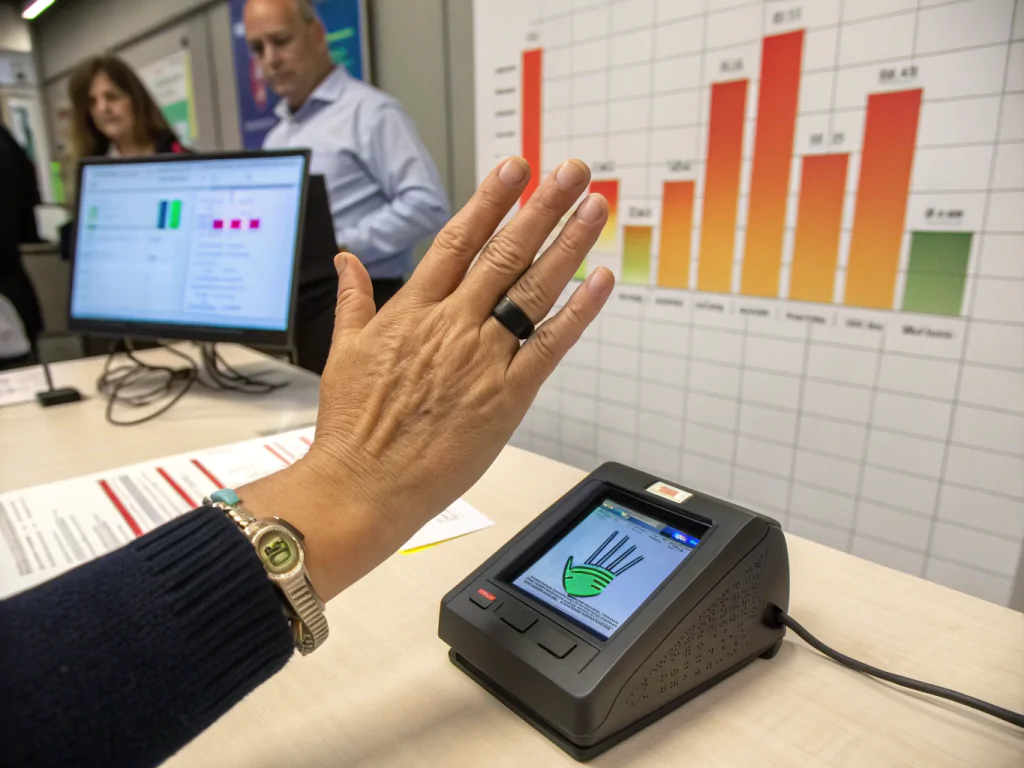
Palm vein systems are great, but there are some practical concerns that shouldn’t be ignored:
- Cost: One of the biggest drawbacks is the price. Palm vein recognition systems can be significantly more expensive to set up than fingerprint scanners.
- Health Effects: I’ve noticed that some health conditions, like fever, can make it harder to get a good scan. This can sometimes lead to delays or inaccurate readings.
- Smaller Databases: In comparison to fingerprint systems, palm vein databases are still relatively small. This means it can be harder to find matches in large-scale systems.
What Is the Difference Between Palm Vein and Fingerprint Recognition?
When I started exploring different biometric systems, one of the first things I noticed was the key difference between palm vein and fingerprint recognition: the source of the data. Palm vein uses internal features, while fingerprints rely on surface-level patterns.
Palm vein recognition scans internal vein patterns, making it more secure and harder to fake. Fingerprint recognition, on the other hand, uses external patterns that are easier to replicate.
Here’s why this internal vs. external difference matters:
- Security: Because palm vein patterns are internal, they are much harder to forge. Anyone can fake a fingerprint by lifting it from a surface, but replicating a vein pattern inside the palm is far more difficult.
- Accuracy: Fingerprints are great for identifying individuals, but palm vein recognition takes it a step further by using more unique, complex data.
I’ve seen situations where palm vein recognition was able to catch attempts at fraud that fingerprint recognition missed. It’s just that much more secure.
Is Palm Vein Technology the Best Biometric Solution?
After looking at palm vein technology from all angles, I can confidently say it’s one of the most secure biometric solutions available. But is it the best? It really depends on the application. For highly secure environments, palm vein recognition is hard to beat.
Conclusion
In conclusion, palm vein recognition offers unmatched accuracy and security. While it might not be as widely adopted as fingerprinting or facial recognition, its ability to provide unique, internal data makes it the ideal choice for high-security environments.

